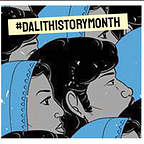Dalit Life at the Limits of the Human: A Reading of Manjule’s Vaikunth
by Soumya Rachel Shailendra
At the peak of the second wave of the COVID-19 pandemic, Danish Siddiqui’s aerial photo of the cremation sites in New Delhi informed the world of the social tragedy unfolding in India. Besides the heaps of ash, timber, and smoke, one can identify the shadowy outlines of Dalit labourers and mourners at the corners of the photograph. As tending to carcasses, corpses, or animal flesh is deemed both unholy and polluting according to the regimes of caste, the burden of deathwork — the labor surrounding the dead body — is particularly borne by Dalit labourers. Yet, what does it mean to perform deathwork during a crisis such as COVID-19, when the marginality of Dalit life is continuously exposed to social and economic precarity?
Nagaraj Manjule revisits the tragedy of the second wave through his portrayal of a Dalit migrant worker, Vikas Chawan (played by Manjule), in his short film, Vaikunth, that is anthologized in Amazon collection, Unpaused: Naya Safar (2022). Manjule, who has carved his niche in Marathi Dalit cinema with films such as Fandry (2013) and Sairat (2016), portrays the harsh realities of caste violence by adopting the strategies of melodramatic realism, a narrative style commonly used in Dalit life writing.
The film begins with a jarring conversation between Chawan and another frontline worker, who remarks, “Iske Saath Koi Nahi Hai” (There is no one with him) while leaving a corpse at the cemetery. By dwelling on such moments of isolation and loss, the film takes us through the social life of Mumbai in lockdown, as an overworked Chawan struggles to make ends meet as an undercompensated deathworker.
Isolated by the stigmatized nature of his work, Chawan is forced to vacate his home and ends up staying at the cremation site, Vaikunth, along with his son. At other instances in the film, we see Chawan being harassed by policemen and confronting hostile medical workers, who restrict him from visiting his ailing father in the COVID-19 ward. Manjule’s intervention in Naya Safar foregrounds the psychical and social struggles of the Dalit laborer, who is simultaneously othered and deemed necessary for the operation of caste, even in a period of collective social suffering.
In their book, Precarious Life (2004), the philosopher Judith Butler, evokes “grievability” as a social and affective condition of signifying whether a life is worth living. By studying obituaries of war veterans and other institutions of public memory, Butler notes that the value of human life can be assessed through a simple question: Is the life worth mourning? They write: “Violence against those who are already not quite living, that is, living in a state of suspension between life and death leaves a mark that is no mark.”
In other words, violence against marginalized communities fails to be publicly mourned because the nature of structural violence, like caste, fails to register as violence in the first place.
For Dalit migrant workers such as Manjule’s Chawan who are constantly encountering material struggles of survival, their proximity to death in toxic spaces like the cremation site ontologically displaces them from the rights and protections of the Human. In fact, Dalit life is not grievable because it has never lived, that is, it has never counted as life by being placed at the bottom of the caste hierarchy.
A central paradox regarding Butler’s conceptualization of mourning appears in a caste society such as that of Chawan’s, where Dalits perform crucial deathwork as professional mourners, gravediggers, and cremators.
Even if the non-humanness of Dalit life is not worthy of public mourning, the centrality of deathwork as performed by Dalit labourers is crucial to maintaining the hierarchy of caste and fulfilling the expectations of public mourning, especially in a large-scale crisis such as COVID-19. In other words, a mourning public cannot be socially assembled without the logic of caste, as it materially regulates the circulation of affect and emotion through its division of labor. Put simply: caste is equally a division of emotional labour that relies on subjugation of Dalit labourers as the nonhuman to sustain its social order.
Chawan’s intimate encounter with death is most clearly visible in the last scene, where he catastrophizes his father’s death after a frontline worker points him to an ambulance carrying corpses. Manjule cuts the scene with slow motion shots of a tractor dumping the ash from the cremation grounds in rural fields as compost for the soil. In these vastly different scenarios, the audience realizes that Chawan has already experienced death. In fact, he has already visualized the remains of his father fertilizing the lush, green crops as he struggles to breathe amongst the smog of the cremation ground.
Despite assisting in other’s funerals, the possibility of his father’s demise reveals the irony of his profession, allowing audiences to observe the unlivable fragility of Dalit life, especially at a time of collective vulnerability.
Soumya Rachel Shailendra is a PhD student in Comparative Literary studies at Northwestern University, Evanston. Her research focuses on the aesthetic and cultural imprints of twentieth-century Dalit-Black relations and transnational revolutionary aesthetics.
